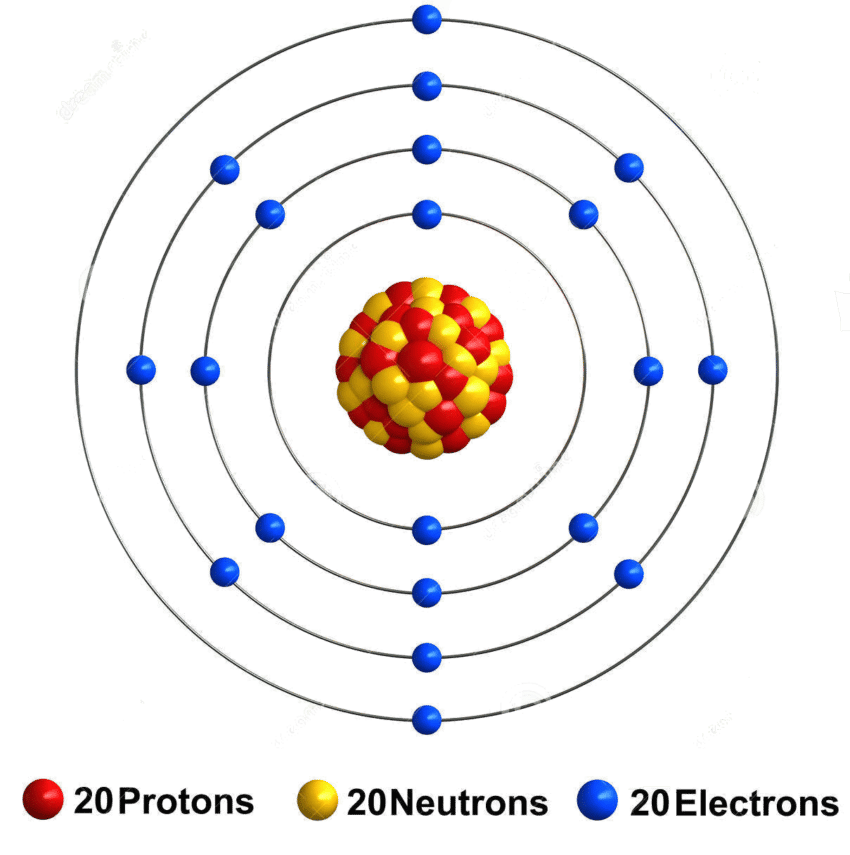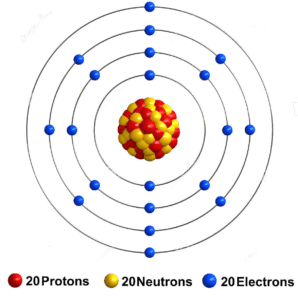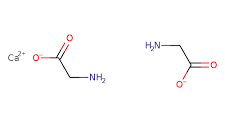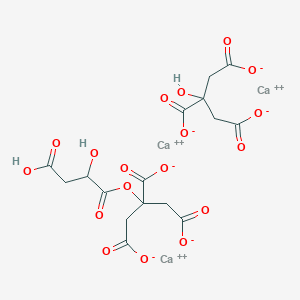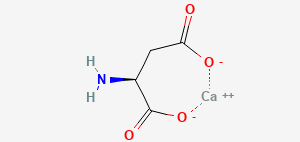Calcium Atomic Structure
When we think of how Calcium benefits the body, most will only think of bones and teeth, but its effects are more far reaching. From Heart and Nervous System health to a healthy Metabolism and even protecting us from toxic minerals, Calcium has it covered. Your mother only had it half right when she told you to drink your milk, so you’d grow up having strong bones. Actually, Calcium from dairy products is very poorly absorbed, the only possible exception would be fermented dairy products such as yogurt. Thus, obtaining this mineral from plant sources is a much better option. There are many factors that can impede Calcium uptake during digestion. A major culprit is the over prescription of H2 Histamine Blockers and Proton Pump Inhibitors to lower stomach acid for those who are afflicted with Gastric Reflux. I find this ironic as most times reflux is caused by insufficient stomach acid and or enzyme production. The over prescription of these drugs causes many nutritional imbalances as without sufficient stomach acid food cannot be properly digested. So, if you use these drugs, taking a Calcium supplement makes sense.
There is some outdated information regarding Calcium that I would like to address. It was once thought that consuming a high protein diet would leach Calcium from one’s bones. Then, in 1997 a study showed that urinary Calcium excretion was no higher in people consuming 450 grams of protein per day compared to those consuming only 5 grams daily. It was also believed that the optimal Calcium:Magnesium ratio was 2:1. However, studies have shown our population to be severely Magnesium deficient. Thus, a more appropriate ratio of 1.5-1.0:1 is now considered to be optimal.
You will see advertisements for many different forms of Calcium most of which are very poorly absorbed. The least absorbable forms are those that neutralize stomach acid such as Calcium Carbonate or Oyster Shell Calcium, so I do not recommend these as supplements. Calcium Gluconate is another widely used form of Calcium that is very poorly absorbed and should be avoided. Unless you examine the ingredients very carefully, stay away from the “one pill does it all” formulas as they are often loaded with inferior ingredients.
The Health Benefits of Calcium:
CARDIOVASCULAR SYSTEM
• Activates Prothrombin converting Fibrinogen to Fibrin, which enhances blood clotting.
• Helps to regulate pH balance of the Blood.
• May help to lower High Blood Pressure.
• Helps to normalize Heart Arrhythmias that occur as a result of deficiency.
• May help to prevent both Ischemic and Hemorrhagic Stroke.
CELLS
• Improves cell membrane permeability.
• Helps facilitate Apoptosis, a normal process that helps to destroy some type of Cancer Cells.
DIGESTIVE SYSTEM
• May help to relieve Constipation as these patients are often deficient.
• Can help to alleviate Gastric Ulcers.
• Calcium Carbonate alleviates Heartburn.
ENDOCRINE SYSTEM
• Especially when consumed at night, helps facilitate the production of Melatonin.
• Supplementation may enhance the function of the Adrenal Glands.
EXCRETORY SYSTEM
• Helps regulate the body’s Electrolyte balance.
• Excessive Perspiration (Hyperhidrosis) can occur as a result of deficiency.
• Helps prevent Kidney Stones except in people with Hypercalciuria (abnormally high Calcium in the urine), in which case the converse is true.
• Required for proper Kidney function.
HEARING & VISION
• Otosclerosis patients exhibit elevated Calcium levels in Blood Serum possibly implying deficient Bone Calcium levels. Supplementation along with Vitamin D may improve Hearing.
• Supplementation may prevent Cataracts.
IMMUNE SYSTEM
• Supplementation may help to prevent the following Cancers:
▪ Brain
▪ Gliomas
▪ Meningioma
▪ Colon (binds with some carcinogens)
▪ Ovarian
METABOLISM
• Can lower total serum Cholesterol.
• Helps increase High Density Lipoproteins.
• Can lower Low Density Lipoproteins by up to 11%.
• May help prevent Diabetes Mellitus Type 2.
• Fatigue can result from deficiency.
• 300mg taken with every meal may help to alleviate Hemochromatosis by inhibiting Iron absorption.
• May help prevent Insulin Resistance.
• May help facilitate weight loss in those afflicted with Obesity.
• May be required for the production of Adenosine Triphosphate (ATP).
MUSCULOSKELETAL SYSTEM
• 98% of the body’s Calcium in concentrated in the Bones.
• On average, 700mg of the mineral move in and out of the Bones each day.
• Supplementation in post-menopausal women significantly increases Bone Mass.
• Deficiency may result in Bone Pain.
• Helps prevent fractures.
• Deficiency can result in Osteomalacia (softening of the bones).
• Helps prevent Osteoporosis.
• Adjunctive therapy for Paget’s Disease.
• Rickets may develop as a result of deficiency, but most often inadequate Vitamin D is the cause.
• Joint pain may occur as a result of deficiency.
• Combat Muscle Weakness in the elderly.
• May alleviate some forms of Backache.
• Supplementation may alleviate Muscle Cramps.
• Helps facilitate Muscle Growth in athletes.
NERVOUS SYSTEM
• May be useful in the treatment of Alzheimer’s Disease as it tends to activate Choline Acetylase increasing the production of Acetylcholine.
• By lowering elevated Lactic Acid may help to reduce Anxiety.
• Deficiency is a possible underlying cause of Attention Deficit Hyperactivity Disorder (ADHD).
• More than 20% of Autism patients are deficient in this mineral.
• May help to treat Depression in post-menopausal women and elderly patients.
• Can alleviate Headaches.
• Due to its ability to sedate the Central Nervous System, may be useful in treating Insomnia and Early Wakening.
• Irritability can be a result of deficiency.
• Alleviates Migraines in some patients.
• When used in conjunction with Magnesium and Vitamin D3, may reduce the severity of Multiple Sclerosis.
• Nervousness may occur from deficiency.
• Deficiency can manifest itself as Numbness in the arms and legs.
• Supplementation may enhance Neuron activity associated with Mood Disorders and Emotion.
• Involved in the transmission of Nerve Impulses.
• Influences the function of Acetylcholine, Norepinephrine and Serotonin.
ORAL HEALTH
• Supplementation can alleviate Bruxism (tooth grinding).
• Periodontal Disease can result from Alveolar Bone loss due to deficiency.
• Reduces the size of Inflammation pocket around the roots of teeth.
• Helps to heal loose Teeth.
• Deficiency can lead to Tooth Decay.
• Helps prevent Tooth loss.
• 1% of the body’s Calcium is stored in Tooth enamel.
RESPIRATORY SYSTEM
• May help to alleviate some cases of Asthma.
SEXUAL SYSTEM (Female)
• May help to relieve Dysmenorrhea (Menstrual Cramps).
• Required by the Ovaries for the production of Estrogen.
• When combined with Vitamin D3 is useful in the treatment of Polycystic Ovary Syndrome (PCOS).
• Can help to reduce the symptoms of Pre-Menstrual Syndrome (PMS).
• Can help prevent Preeclampsia
SKIN / HAIR / NAILS
• Deficiency can contribute to Acne.
• May be useful in the treatment of Eczema.
• Gray Hair can result from deficiency.
• Deficiency may contribute to Herpes Simplex Virus outbreaks.
• Brittle Nails result from deficiency.
• May help to alleviate Shingles outbreaks.
TOXINS
• Inhibits the ability of Bile Acids and Deoxycholic Acid to initiate Colon Cancer.
• When combined with Magnesium may help to eliminate some types of Radioactive Isotopes from the bones.
• Helps to counteract excessive Fatty Acid Synthase activity which is implicated in Obesity.
• May hasten the excretion of Arsenic from the body.
• Helps counteract the toxicity associated with Fluorine.
• By competing for absorption, helps protect the body from some Toxic Heavy Metals such as:
▪Aluminum
▪ Cadmium
▪ Lead
▪ Mercury
▪ Rubidium
• Binds with excess Lactic Acid.
• May help prevent tolerance development to Morphine.
• Inhibits the conversion of dietary Heme into carcinogenic metabolites.
USAGE
Depending on age and sex the Recommended Daily Intake (RDI) for Calcium is between 1,000mg and 1,300mg daily. The average daily intake of Calcium in Western nations is about 743mg per day. Keep in mind that not all of this may be absorbed which is why we supplement with this mineral. If you recall the statistic I quoted above, this 743mg (should we absorb 100% of it) just covers what we move in and out of our bones each day. If we were to need more than this, we would be in a deficient state. Since Calcium competes with other minerals for absorption, it’s best to break up you total daily dosage into two or three doses taken with meals for proper assimilation. Generally, approximately 300mg or so per meal is preferred. There are some Calcium supplements (listed below) that may be consumed without food. If you are supplementing with Calcium due to bone loss (Osteopenia or Osteoporosis) you’ll want to ensure that you balance your Calcium with Phosphorus, Magnesium, Vitamin K, Vitamin D3 and Boron for optimum bone strength. Likewise, adequate Zinc is required to prevent a buildup of intracellular Calcium which is linked to premature aging and cell death. It is important not to over supplement with Calcium as an excess can contribute to Atherosclerosis or “hardening of the arteries”. It is important to note that Atherosclerotic plaques cannot be mitigated simply by reducing Calcium intake. Should an arterial blockage occur medical intervention is required.
IMPORTANT NOTES:
• The following drugs all interfere with Calcium utilization and or absorption:
▪ Alcohol
▪ Antacids
▪ Aspirin
▪ Betamethasone
▪ Budenoside
▪ Caffeine
▪ Calcipotriol
▪ Diuretics
▪ H2 Histamine Receptor Antagonists
▪ Nicotine
▪ Paracetamol
▪ Proton Pump Inhibitors
▪ Tetracycline
▪ Tobacco
• The following dietary substances interfere with Calcium utilization and or absorption:
▪ Chitosan
▪ Dietary Fiber
▪ Methionine
▪ Sucrose
• The following minerals compete with Calcium for absorption:
▪ Aluminum
▪ Cadmium
▪ Copper
▪ Iron
▪ Fluoride
▪ Lead
▪ Magnesium
▪ Manganese
▪ Mercury
▪ Phosphorus
▪ Sodium Chloride
CAUTIONS:
• Patients taking Calcium Channel Blockers for Hypertension or Arrhythmias should consult with their physician before supplementing with Calcium.
• Patients with diagnosed Atherosclerosis should exercise caution when supplementing with Calcium.
• People with Lung or Prostate Cancer should not supplement with Calcium unless a definite deficiency has been identified.
• If you suffer from Kidney Stones or Cystitis, you should exercise caution when supplementing with Calcium.
• Supplementation of over 3,00mg of Calcium per day may suppress the activity of neurons in the Brain that are associated with Mood, Emotion and Cognition and is detrimental to Brain health.
• Women suffering from PMS-A (Anxiety form of Pre-Menstrual Syndrome) may want to reduce their intake of Calcium to improve Magnesium uptake.
My Personal Recommendations:
The following Calcium supplements are listed in order of absorption starting with the most bioavailable.
Calcium Bisglycinate Molecular Structure
Calcium Bisglycinate is a Calcium salt of bisglycinic acid. Its chemical formula is C4H4CaN2O. Calcium Bisglycinate has been shown to bind with metals such as copper and zinc, preventing the formation of reactive metal ions that can damage cells. Calcium bisglycinate also has antioxidant properties that may be due to its ability to inhibit lipid peroxidation by scavenging free radicals. This form of Calcium is regarded to be the most absorbable. It is 1.8 times better absorbed than Calcium Citrate and more than 200 times more soluble.
Calcium Glycinate Molecular Structure
Calcium Glycinate is an amino acid chelated form of Calcium. When a mineral is chelated, it is chemically bound to another substance (such as an amino acid) enabling it to be absorbed by the digestive tract. A simple way to think of this is that the mineral has been “predigested” for better assimilation. Calcium Glycinate is similar in structure to Calcium Bisglycinate with a slightly different chemical formula of C4H8CaN2O.
Calcium Citrate Malate Molecular Structure
Calcium Citrate Malate is a recently developed form of Calcium. It is six time more soluble than Calcium Citrate. It is an excellent option for those with low stomach acid or taking prescription stomach acid reducers. From PubMed: “Unlike other calcium sources that necessitate supplementation be in conjunction with a meal to ensure an appreciable benefit is derived, CCM can be consumed with or without food and delivers a significant nutritional benefit to individuals of all ages. The chemistry of CCM makes it a particularly beneficial calcium source for individuals with hypochlorydia or achlorydia, which generally includes the elderly and those on medications that decrease gastric acid secretion. CCM is also recognized as a calcium source that does not increase the risk of kidney stones, and in fact it protects against stone-forming potential.”
Calcium Citrate Malate – 250mg
Calcium Citrate Molecular Structure
Calcium Citrate was once regarded as the form of Calcium with the best absorption. However, with the introduction of Calcium Bisglycinate, Calcium Citrate Malate and other amino acid chelates, Calcium Citrate has fallen to fourth place. It is still a very absorbable form of Calcium that may be taken without regard to meals. It is excellent Calcium supplement for those with low stomach acid or who take drugs to reduce stomach acid. The absorption rate in these patients is about 45%.
Calcium Aspartate Molecular Structure
Calcium Aspartate is another highly absorbable form of Calcium that fell out of favor somewhat due to some misinformation. First, is its perceived low Calcium content. This is not true as Calcium Aspartate contains approximately 20% Calcium while Calcium Citrate has just 22% Calcium. Not much of a difference there. It was also believed that the Aspartic Acid would over excite and be toxic to NMDA receptors in the Brain. New theories dispute this claim stating that this toxicity does not occur when Aspartic Acid is bound to a mineral carrier. While it is probably not a good idea to ingest large quantities of Aspartic Acid, incorporating Calcium Aspartate into your Calcium regime is not a bad idea as its absorption rate is between 50%-90%!
Calcium Hydroxyapatite Molecular Structure
Calcium Hydroxyapatite is the form of Calcium found in Bones and Teeth. When first introduced as a supplement it was mainly just ground up bonemeal which was poorly absorbed by the body. However, modern processing techniques have been able to form microcrystals (pictured above) of this supplement greatly improving absorption. From the NIH: “Calcium hydroxyapatite microcrystal is a natural extract of bone calcium. Calcium hydroxyapatite microcrystal contains a number of minerals in physiological proportions along with other bone organic minerals. Evidence suggesting that calcium hydroxyapatite microcrystal is better absorbed than calcium supplements has triggered a variety of clinical applications. Oral administration of calcium hydroxyapatite microcrystals can accelerate fracture healing and repair and even prevent osteoporosis”.
Calcium Hydroxyapatite – 250mg
For optimum bone strength consider combining Calcium with Vitamin D3, Magnesium, Boron and Zinc.
Receive my personal support with each verifiable purchase made through this site.
Get answers to your questions either by
email or telephone.
Take advantage of my 35 plus years of experience as a researcher and healer.
Just use the CONTACT form to initiate the process.

